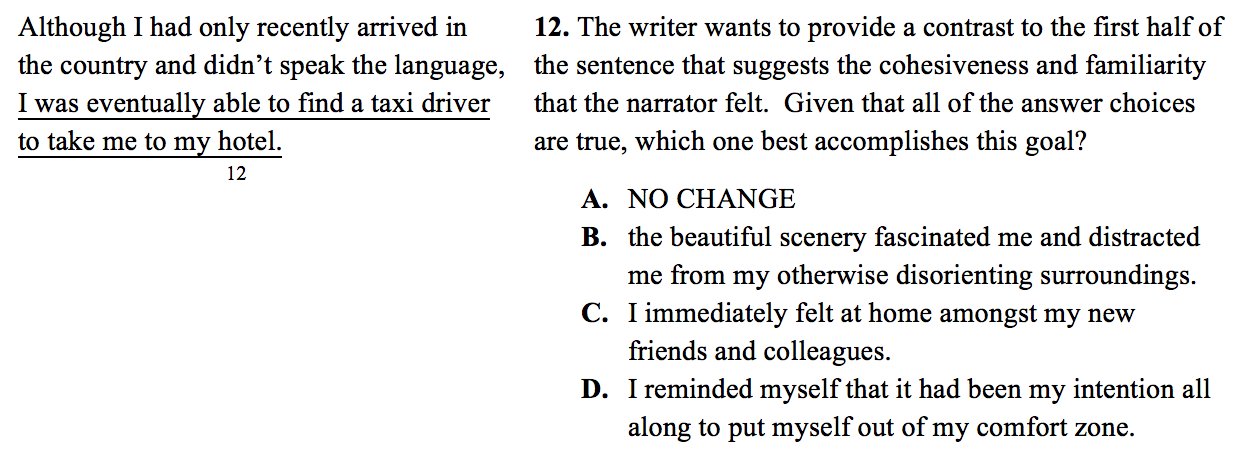The ACT English section requires students to work more quickly than the other three sections do. With the English section’s 75 questions in 45 minutes, students can’t afford to spend more than 30 to 45 seconds per question. While questions that test specific grammar rules don’t tend to take very long to complete, questions that test style and organization—rhetoric questions—can be both difficult and time consuming. Most of our students who complete initial diagnostic exams do worse on rhetoric questions than they do on grammar questions. For the sake of time and accuracy, it is important to develop an efficient technique for rhetoric questions.
Rhetoric questions tend to ask how to arrange the sentences in a paragraph, whether or not a particular sentence or phrase should be added to a passage, or how to revise a sentence to achieve a stated purpose.
Let’s start by defining what types of questions fall into the category of rhetoric questions. Broadly speaking, any question that does not test a major grammar rule (punctuation, verb tense or agreement, pronouns, etc.) is a rhetoric question. Rhetoric questions tend to ask how to arrange the sentences in a paragraph, whether or not a particular sentence or phrase should be added to a passage, or how to revise a sentence to achieve a stated purpose. Another way to spot rhetoric questions is that they tend to actually pose an explicit question, given by a question prompt. Most grammar questions simply underline a portion of a sentence and give four options (“no change” along with three alternatives); it is assumed that you are supposed to choose the grammatically correct option. Rhetoric questions tend to specify exactly what a student is supposed to do.
The first important technique for rhetoric questions is to read the entire question prompt and identify what its goal is. In fact, underline any key words you notice in the question prompt. When I review rhetoric questions from practice exams with my students, I start by reading them the question. They often interrupt me: “Oh, I didn’t even see the question!” They are so used to churning through questions (simply looking for the grammatically correct answer choice) that they neglect to actually read the question. This is a big problem because rhetoric questions often contain four answer choices that are all grammatically correct. Let’s take a look at a sample question to see this technique in action:

Notice how, depending on what the author’s purpose was, each of the answer choices could be correct. That’s why it is so important to fully read the question. In this case, the key words from the question are cohesiveness and familiarity. Once a student identifies this as the goal of the question, it’s clear that the answer is C.
The ACT values consistency and parallelism. If you can identify a particular sentence structure or type of description in a prior sentence, it is likely that you’ll see some sort of parallel sentence later on.
Another useful technique on rhetoric questions is to look at the surround sentences for organizational or context clues. The ACT values consistency and parallelism. If you can identify a particular sentence structure or type of description in a prior sentence, it is likely that you’ll see some sort of parallel sentence later on. Again, let’s take a look at an example of this:

As we can see again, all four answer choices could theoretically be correct. Given the fact that the first sentence mentions an “array of colors” and the second sentence describes the rocky canyon as “dark brown and orange,” it’s clear that A is the correct answer here. When in doubt on rhetoric questions, pick answer choices that create similar sentence structures or descriptions.
There are many other helpful techniques that you can apply to rhetoric questions on the ACT English section (some of which we will examine here in the future), but these two techniques are a great start for students who are struggling. With practice, students can achieve the same level of accuracy that they see on grammar questions.
Related Posts
How To: Answer Organization Questions
How To: Avoid Wordiness

